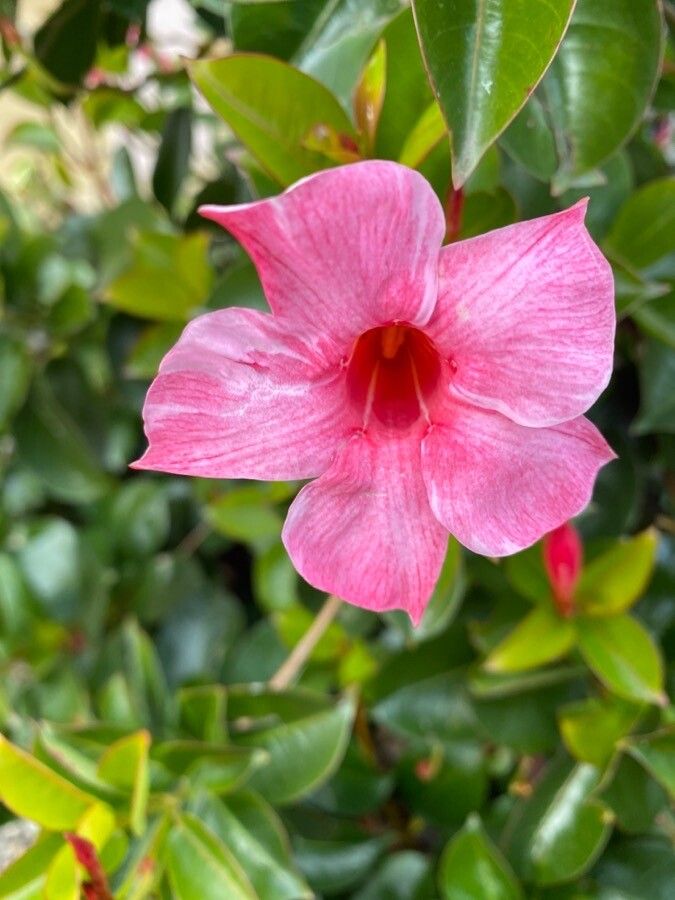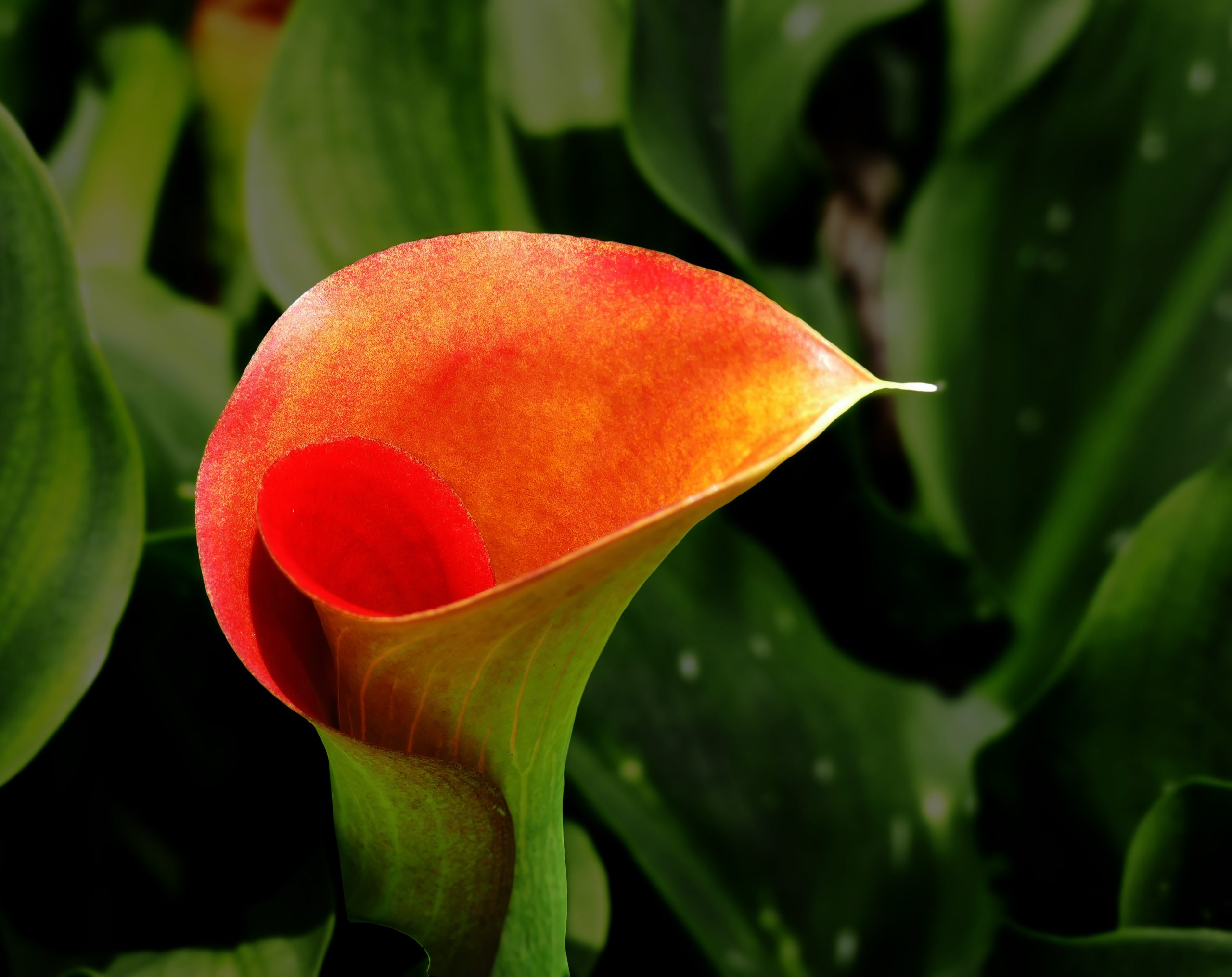Mandevilla Splendens: A Comprehensive Guide to Growing and Caring for These Stunning Vines(2023)
Mandevilla Splendens, also known as the Rocktrumpet, is a breathtaking flowering vine that has gained immense popularity among garden enthusiasts. In this comprehensive guide, we will delve into the various aspects of growing and caring for Mandevilla Splendens, ensuring that you have all the knowledge needed to cultivate these stunning vines successfully.
Overview of Mandevilla Splendens
Mandevilla Splendens is a vigorous and fast-growing vine native to South America, particularly Brazil. Mandevilla Splendens belongs to the Apocynaceae family and is revered for its vibrant trumpet-shaped flowers that come in shades of pink, red and white. When combined with its lush green foliage, these exquisite blooms make Mandevilla Splendens an eye-catching addition to any garden or landscape.
Importance and Popularity of Mandevilla Splendens
Due to its captivating beauty and versatility, Mandevilla Splendens has become increasingly popular among gardeners, landscapers, and horticulture enthusiasts. Its ability to climb trellises, fences, and walls makes it an excellent choice for vertical gardening, while its stunning flowers and attractive foliage make it a favored option for adding color and charm to containers, hanging baskets, and landscape designs.
Understanding Mandevilla Splendens
To cultivate Mandevilla Splendens successfully, it is crucial to have a good understanding of its botanical classification, origin, and key characteristics.
Botanical Classification and Origin
Mandevilla Splendens belongs to the Mandevilla genus, which comprises various tropical and subtropical flowering vines. Mandevilla species are native to tropical regions of South America, particularly Brazil. The Mandevilla genus was named for Henry Mandeville a British diplomat and gardener who established gardens there.
Description of Mandevilla Splendens
Mandevilla Splendens is a woody vine that can reach emotional heights of over to 15 bases(4.5 measures) when provided with proper support. Its leaves feature lustrous, dark green leaves arranged opposite each other along the stem, while trumpet- shaped flowers bloom in clusters up to 4 elevation( 10 centimeters) across and create an eye- catching visual display.
Varieties and Cultivars
Over time, various Mandevilla Splendens varieties and cultivars have been developed, offering a wide range of flower colors, sizes, and growth habits. Some popular cultivars include ‘Alice du Pont’ with its deep pink flowers, ‘Sundaville Red’ known for its prolific blooms, and ‘Boliviensis’ featuring smaller, delicate flowers in shades of white and yellow.
Growing Mandevilla Splendens

To ensure the healthy growth of Mandevilla Splendens, it is important to consider its climate and environmental requirements, select the right location for planting, and implement proper planting techniques.
Climate and Environmental Requirements
Mandevilla thrives in warm and tropical climates, where temperatures range between 60°F (15°C) and 90°F (32°C). It is best suited for USDA hardiness zones 9 to 11. These vines require ample sunlight, preferably six to eight hours of direct sunlight daily, to bloom profusely and maintain robust growth.
Selecting the Right Location for Planting
When choosing a location for planting Mandevilla Splendens, it is crucial to consider factors such as sunlight exposure, soil quality, and available support structures. Select a spot that receives abundant sunlight and provides a sturdy trellis, arbor, or fence for the vine to climb. Ensure the soil is well-drained and enriched with organic matter to promote healthy root development.
Soil Preparation and Planting Techniques
Prepare the soil by incorporating organic compost or well-rotted manure to improve its fertility and drainage. Dig a hole slightly larger than the root ball of the plant and place the vine in the hole, ensuring that the soil level around the stem remains the same as it was in the pot. Gently backfill the hole and tamp the soil to eliminate air pockets.
Watering and Irrigation Guidelines
Proper watering is essential for the well-being of Mandevilla Splendens. While these vines require regular watering, it is important to avoid overwatering, as it can lead to root rot. Water the plants deeply, allowing the soil to dry partially between watering sessions. Mulching around the base of the plant can help retain moisture and regulate soil temperature.
Fertilization and Nutrient Requirements
Mandevilla Splendens benefits from regular feeding to promote vigorous growth and abundant flowering. Apply a balanced fertilizer every two to three weeks during the growing season, following the package instructions for application rates. Additionally, supplement the plant with a phosphorus-rich fertilizer to enhance flower production.
Pruning and Training Methods
Pruning plays a vital role in maintaining the shape and size of Mandevilla Splendens and encourages new growth. Prune the vines in early spring before new growth emerges, removing any dead or damaged branches. Regularly pinch back the growing tips to encourage branching and a fuller appearance. Train the vines by gently tying them to a support structure as they grow.
Care and Maintenance
To ensure the health and vitality of Mandevilla , it is important to provide adequate sunlight, consider temperature and humidity requirements, manage pests and diseases, implement proper mulching and weed control, and follow seasonal care tips.
Providing Adequate Sunlight
Mandevilla Splendens thrives in full sun to part shade conditions. Ensure the vines receive at least six hours of direct sunlight daily for optimal growth and abundant flowering. In areas with intense afternoon sun, some light shade during the hottest part of the day can prevent leaf scorching.
Temperature and Humidity Considerations
These tropical vines prefer warm temperatures and high humidity. Plants do not tolerate frost or freezing temperatures well and should be brought indoors when temperatures fall below 50degF (10degC). Maintaining humidity levels between 50%-60% for their optimal growth in dry climates.
Pests and Diseases Management
Mandevilla can be susceptible to pests such as aphids, mealybugs, and spider mites. Regularly inspect the foliage for signs of infestation and treat with appropriate organic or chemical controls if necessary. Additionally, watch out for common fungal diseases like powdery mildew and leaf spots, and promptly address them with fungicidal sprays or cultural practices.
Mulching and Weed Control
Applying a layer of organic mulch around the base of the plants helps retain moisture, suppresses weed growth, and regulates soil temperature. Use materials like wood chips, straw, or bark mulch and ensure the mulch is spread evenly, leaving a small space around the stem to prevent rotting.
Seasonal Care Tips
During the growing season, regularly monitor the plants for any signs of nutrient deficiencies, pests, or diseases. Adjust watering and fertilization according to the needs of the vine. In colder climates, consider overwintering the plant indoors or providing protective coverings during the winter months.
Propagation Techniques
Mandevilla Splendens can be propagated through various methods, including seed propagation, stem cutting propagation, layering propagation, and grafting.
Seed Propagation
Although viable seeds can be obtained from mature Mandevilla Splendens plants, growing these vines from seeds can be a lengthy process. Sow the seeds in a well-draining seed-starting mix, keeping them consistently moist and providing warmth and light until germination occurs.
Stem Cutting Propagation
Stem cuttings are a popular and reliable method of propagating Mandevilla . Take cuttings of healthy stems, approximately 6 inches (15 centimeters) long, and remove the lower leaves. Dip the cut ends in a rooting hormone and plant them in a well-draining rooting medium. Provide warmth, humidity, and indirect light until the cuttings root and can be transplanted.
Layering Propagation
Layering is another effective propagation technique for Mandevilla Splendens. Select a low-growing stem and make a small incision on the underside, applying a rooting hormone to the wounded area. Bury the wounded portion in a small hole filled with soil, leaving the tip exposed. After roots develop, detach the newly rooted plant from the parent vine and transplant it.
Grafting and Other Propagation Methods
Grafting Mandevilla Splendens onto rootstock is a technique used for specific purposes, such as maintaining desirable characteristics or combining different varieties. While grafting requires advanced horticultural skills, it can result in plants with superior qualities. Other propagation methods, such as air layering and tissue culture, are less commonly used but can be explored by experienced gardeners and professionals.
Landscaping with Mandevilla Splendens
Mandevilla offers various landscaping possibilities, whether used as a standalone plant, combined with other plants, or in vertical gardening arrangements.
Using Mandevilla Splendens as a Standalone Plant
When planted individually, Mandevilla Splendens creates a striking focal point in the landscape. Its climbing habit and vibrant flowers draw attention and add vertical interest. Place it near walls, fences, or pergolas to showcase its natural beauty.
Combining Mandevilla Splendens with Other Plants
Mandevilla can be paired with other plants to create captivating combinations. Consider planting it alongside colorful annuals or perennials that complement its flower color, such as petunias, salvias, or lantanas. The contrasting textures and heights of the companion plants enhance the overall visual appeal.
Vertical Gardening Ideas with Mandevilla Splendens
Mandevilla is well-suited for vertical gardening projects, such as living walls, trellises, or arbors. Use sturdy supports and guide the vines along the structure as they grow. Incorporate other climbing or trailing plants to create a lush and dynamic vertical garden.
Training Mandevilla Splendens as a Climber
Mandevilla Splendens has a natural climbing habit and can be trained to grow along trellises, supports, or other structures.
Installing Trellises and Supports
Before planting, install trellises, arbors, or other suitable supports that can accommodate the growth of Mandevilla Splendens. Ensure the supports are sturdy and firmly anchored to provide stability as the vine climbs.
Pruning and Guiding the Vines
Regular pruning is essential for training and maintaining the desired shape of Mandevilla as a climber. Trim back excessive growth and redirect the vines by gently tying them to the supports. Prune after flowering to promote branching and encourage new blooms.
Managing Growth and Direction
Monitor the growth of Mandevilla Splendens and guide the vines to prevent them from overwhelming neighboring plants or structures. Regularly inspect the supports for any damage or signs of weakness and provide additional support if needed.
Common Uses of Mandevilla Splendens
Mandevilla offers versatility in its applications, and its captivating beauty can be showcased in various gardening and landscaping endeavors.
Container Gardening
The compact and manageable size of Mandevilla Splendens makes it an excellent choice for container gardening. Plant it in large pots or containers, ensuring proper drainage, and place them on patios, decks, or balconies to add a touch of elegance and color.
Hanging Baskets and Vertical Gardens
With its trailing growth habit, Mandevilla is well-suited for hanging baskets and vertical garden installations. Combine it with other trailing plants or let it cascade over the edges of the container, creating a stunning display of cascading flowers.
Landscaping Accents and Focal Points
Mandevilla Splendens can serve as a focal point or accent plant in landscape designs. Use it strategically to enhance specific areas of the garden, such as entrances, walkways, or outdoor seating areas. Its vibrant flowers and lush foliage will create an inviting and visually appealing atmosphere.
Troubleshooting Common Issues
Despite being relatively low-maintenance, Mandevilla Splendens may encounter a few common issues that gardeners should be aware of.
Yellowing Leaves and Nutrient Deficiencies
Yellowing leaves can be an indication of nutrient deficiencies, particularly iron or magnesium. Apply a balanced fertilizer or a specific micronutrient supplement to address the issue. Ensure the plants receive adequate nutrition to maintain healthy foliage.
Pest Infestations and Control Measures
Mandevilla Splendens can be vulnerable to pests such as aphids, mealybugs, and spider mites. Regularly inspect the foliage for signs of infestation and treat with appropriate insecticides or organic pest control methods. Encouraging beneficial insects like ladybugs can also help keep pest populations in check.
Leaf Spots and Fungal Diseases
Leaf spots and fungal diseases like powdery mildew can affect Mandevilla Splendens, particularly in humid conditions. Ensure proper spacing between plants for good air circulation, and promptly remove any infected leaves. Fungicidal sprays can be used to manage severe cases of fungal diseases.
Wilting and Watering Problems
Wilting can be a result of either underwatering or overwatering. Maintain a consistent watering schedule, allowing the soil to dry partially between waterings. Adjust watering practices based on weather conditions and the specific needs of the vine.
Questions and Answers (FAQs)
To address common inquiries about growing and caring for Mandevilla Splendens, here are some frequently asked questions:
Can Mandevilla Splendens Tolerate Cold Climates?
Mandevilla Splendens is not frost-tolerant and requires warm temperatures. It is best suited for USDA hardiness zones 9 to 11. In colder regions, it can be grown as an annual or brought indoors during the winter months.
How Often Should I Fertilize Mandevilla Splendens?
During the growing season, fertilize Mandevilla Splendens every two to three weeks using a balanced fertilizer. Follow the package instructions for application rates. Additionally, supplement the plant with a phosphorus-rich fertilizer to promote flowering.
What Are the Common Pests That Affect Mandevilla Splendens?
Mandevilla Splendens can be susceptible to pests such as aphids, mealybugs, spider mites, and whiteflies. Regularly inspect the plants for signs of infestation and take appropriate pest control measures.
Can Mandevilla Splendens Be Grown Indoors?
Mandevilla Splendens can be grown indoors as a houseplant, provided it receives ample sunlight and proper care. Place it near a south or west-facing window to ensure it receives sufficient sunlight.
When Is the Best Time to Prune Mandevilla Splendens?
Prune Mandevilla Splendens in early spring before new growth emerges. Remove any dead or damaged branches and pinch back the growing tips to promote branching and a fuller appearance.
Conclusion
In conclusion, Mandevilla Splendens is a stunning vine that adds beauty and charm to any garden or landscape. By understanding its botanical classification, growth requirements, and proper care techniques, gardeners can successfully cultivate these remarkable plants. Whether used as standalone plants, combined with other flora, or trained as climbers, Mandevilla Splendens is a versatile and rewarding addition to horticultural endeavors. Start growing Mandevilla Splendens and enjoy its vibrant flowers and lush foliage, creating an enchanting and captivating outdoor space.





